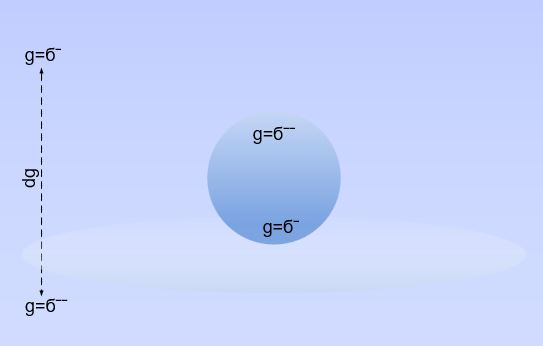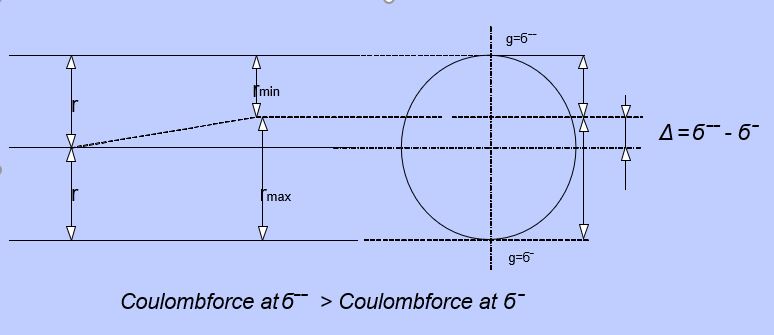Atom in a gravity field
Gravity explored
Without an external gravity field there is no gravitational interaction with the atom. So, what could be the effect of placing the atom into a gravity field.
When looking to the atom and the electron cloud (wave function) surrounding the proton. One can imagine that the cloud itself has a negative charge (field-strength) caused by the negativity of the electron. This charge is in equilibrium with the charge of the core (the proton). With this in mind we assume this atom is somewhere on Earth’s surface undergoing its gravity force. The external gravity force is influencing the electron field of the atom. The electron cloud responds. And the net charge is divided on the cloud to create a counter charge equal to the size of the gravity deviation. Result is that the electron cloud is directed like a polar magnet.

With influencing the “locally” charge of the electron cloud, the equilibrium between the Coulomb force and the Centripetal force is disturbed (See Tie-graph). To create a new equilibrium (for Fc=Fcg) there is an interaction between the proton and the electron on such a way that that a new equilibrium will be achieved. To achieve this new equilibrium the proton (with his positive charge) can move its center towards the side of the atom causing the Coulomb force to increase.

With a moving of the positive charged center (the proton) the atom will have locally induced charge. This influenced locally charge influences the cloud function in a way that a new equilibrium is reached with fully adaption of the gravity field strenght. The atom on itself turns like an magnet so that opposite charges in relation to the gravity field strength occur. The new equilibrium between the Coulomb force and the Centrifugal force can be further explored with help of Kepler’s Law of Planetary Motion.